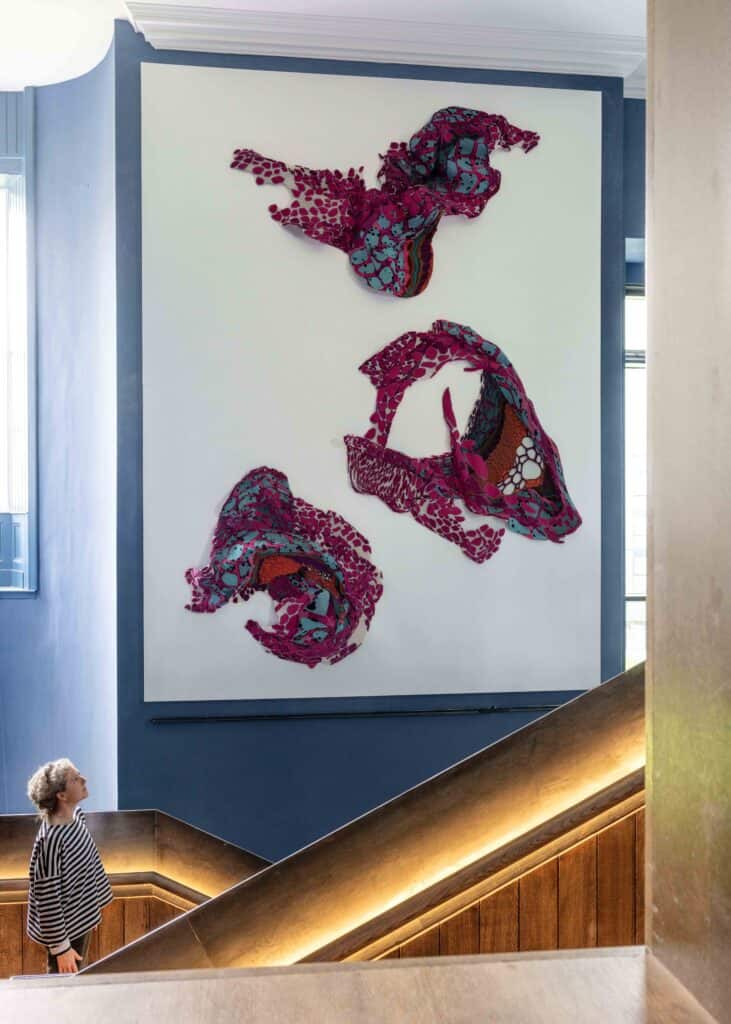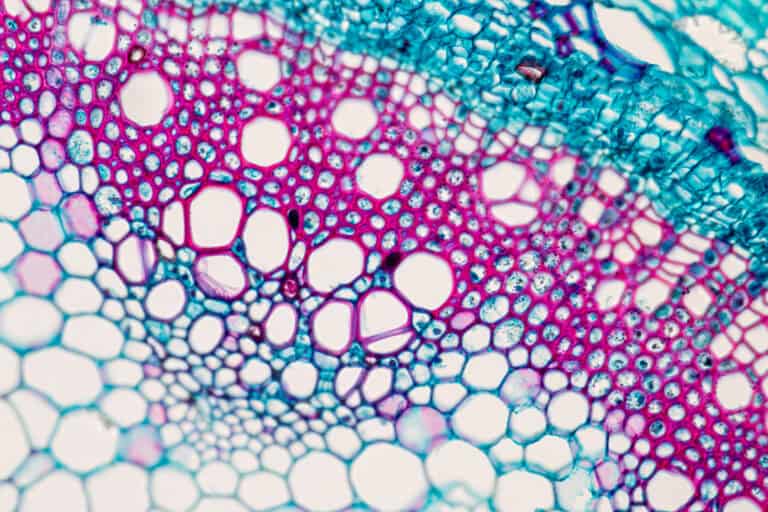Featured image credit © Dovecot Studios
The tapestry is the first major artwork to be installed in Edinburgh Futures Institute. It is a beautiful tribute to pioneering students who showed resilience and determination when their path to education was blocked. They overcame these challenges in different ways – with some continuing their studies in other countries and others becoming valued supporters of women’s education and medical practice.
Interdisciplinarity, collaboration and data are core to all our work at Edinburgh Futures Institute and many disciplines and professional roles were essential to the creation, production and installation of the tapestry. It has been produced with care, commitment and respect and inspires those who work, study and view it, online and in person.
Although none of the Edinburgh Seven practiced medicine in our building, we are pleased that the tapestry allows us to bring them home.
Commissioned by Dovecot Studios, with funding from Sir Ewan and Lady Brown.
The Edinburgh Seven were among the first wave of women to enter a British university, any British university, to study alongside male students. We refer to them as having studied and matriculated here because they were not permitted to graduate.
The Edinburgh Seven tapestry has been made by Dovecot Studios. It celebrates the seven women, but it’s not a figurative design.
Making a tapestry is a very collaborative and interdisciplinary process.
Dovecot invited the artist Christine Borland to create the design, and Christine worked with motion capture specialists to create some data that was then translated into designs and the weaving specialists at the Dovecot Studios they created the tapestry based on her designs. And the design itself has elements which are cellular elements. They echo plant cells and this work, or this idea, comes from Christine’s own interest in medical plants in the history of medicine.
A major strand of work at the Edinburgh Futures Institute is the creative industries in Scotland, and particularly looking at data innovation and digital innovation in the creative industries. So the tapestry is representative of that, both from the partnership that we’ve had the Dovecot Studios, but also showcasing Christine Borland’s work and that idea of how artists can incorporate data and digital in their work.
Design and innovation
The tapestry triptych was created using a combination of traditional and modern materials and techniques and its organic shapes are based on cellular structure in motion
Dovecot commissioned celebrated Scottish artist Christine Borland to design the tapestry, which took seven weavers at Dovecot Studios more than 4,000 hours to create, using more than 90,500 metres of yarn in bold hues of pinks and oranges.
Christine Borland’s design draws on data from motion capture and innovation in materials and techniques used by the weavers at Dovecot Studios. Nylon thread and surgical gauze create invisible areas and hidden fastenings enable a 3D structure and sense of energy and movement.
Borland used motion capture technology to record the movement of cloth in simple acts associated with care, medical training and research. The artist chose the magenta and cyan colours to represent the dyes used in both the scientific staining of cells and textile in the 19th century. The tapestry was brought to life with both traditional and modern techniques using linens, cotton and nylon yarns. Unlike traditional tapestry, the artwork has an organic shape and can be moulded into different sculptural forms.


The Edinburgh Seven
The group, which included pioneering figures Sophia Jex-Blake and Edith Pechey, met with resistance during their time as students, most notably at the 1870 Surgeon’s Hall riot, when protestors attempted to block the women from sitting an exam.
One of the seven, Edith Pechey, moved to India and became a senior medical officer at the Cama Women and Children’s Hospital in Mumbai. While there, she supported the education of one of the first women to practice medicine in India, Dr Rukhmabai.
The women’s efforts attracted support from notable figures including Charles Darwin, and eventually led to the Medical Act of 1876, which legally permitted women to practice medicine.
The University awarded posthumous degrees to the group in 2019.











